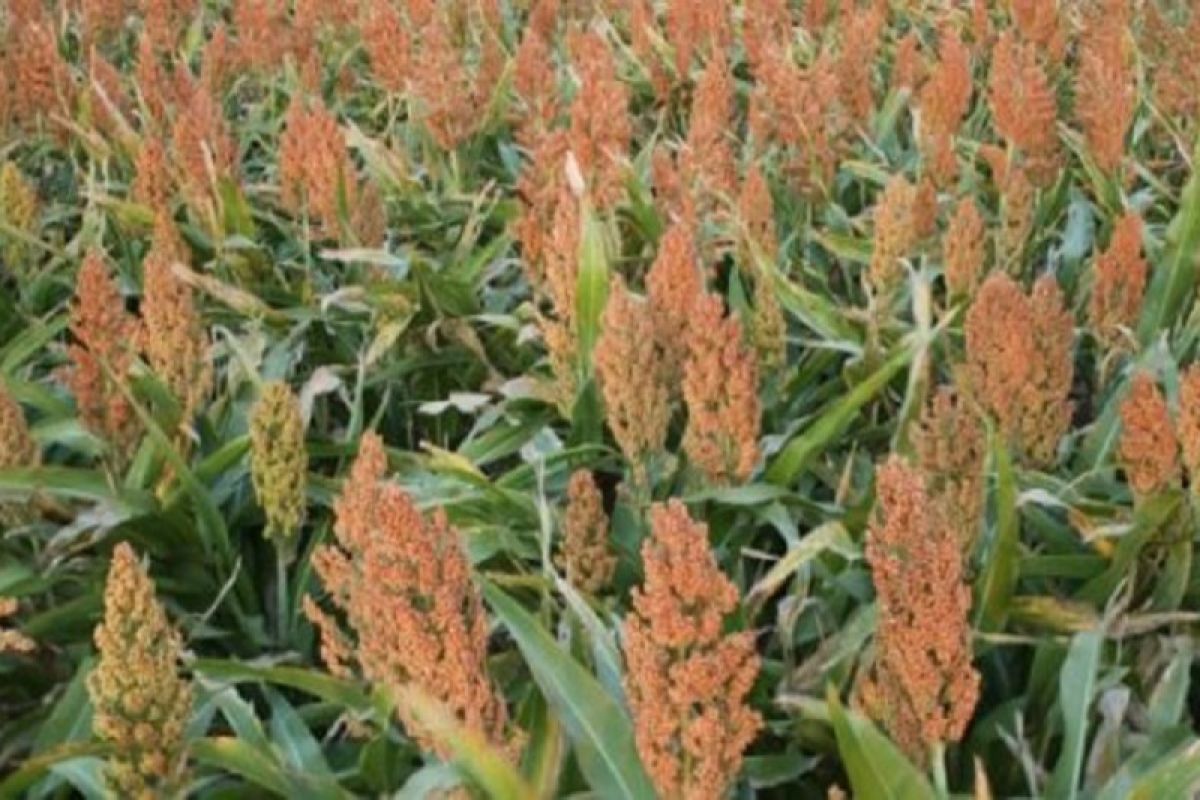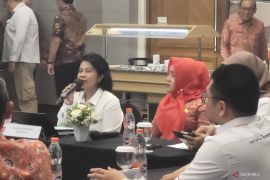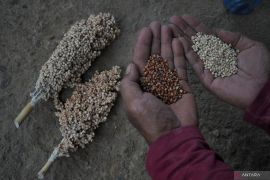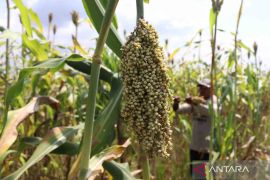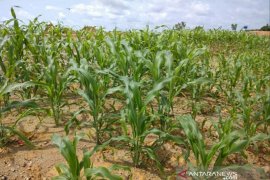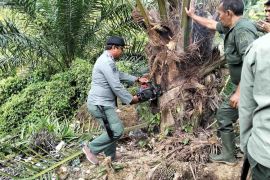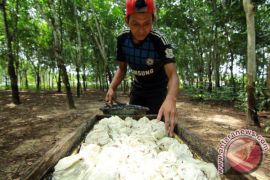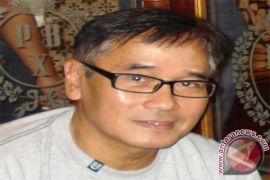We want many alternatives, many choices that we can work on in our country, food diversification, and not only depending on rice, because we have corn, sago, and sorghumJakarta (ANTARA) - Sorghum is a plant whose seeds are used as animal feed and is a basic material for biodiesel energy and food.
This plant comes from the African continent, though currently, it can be cultivated in Indonesia.
Sorghum grain is shaped like corn, though tends to be smaller in size. As food, sorghum can be processed into cereals, porridge, flour, bread, cakes, and syrup.
Several people choose sorghum as a staple food for their diet, as it is rich in fiber and contains additional nutrients that are not found in ordinary carbohydrate sources.
Sorghum mainly contains carbohydrates, protein, fat, fiber, and myconutrients.
Its constituent micronutrient components, such as vitamins, minerals, and antioxidants, make sorghum rich in nutrients.
Although it is a substitute for rice, sorghum has a high enough protein content, so it can meet the daily protein requirements.
Generally, the nutritional content of sorghum is equivalent to that of wheat and other fiber-rich grains.
Unlike most grains, sorghum does not contain gluten. This is certainly good news for people, who have allergies to gluten.
On June 2, President Joko Widodo (Jokowi) inspected the planting area and the sorghum processing factory in East Sumba District as part of his working visit to the eastern Indonesian province of East Nusa Tenggara (NTT) Province.
Sorghum was harvested as an alternative food source apart from rice and corn to address the food crisis for which the World Food and Agriculture Organization (FAO) had given a warning.
Based on the official video uploaded, President Jokowi and Mrs. Iriana planted sorghum seeds using sneakers. The head of state was also seen riding a combine harvester on a sorghum field.
"We want many alternatives, many choices that we can work on in our country, food diversification, and not only depending on rice, because we have corn, sago, and sorghum," President Jokowi stated.
President Jokowi drew attention to the current hike in food prices across the world. According to the head of state, Indonesia should have a big plan to deal with the food crisis, as warned by the FAO.
East Sumba District has land suitable for planting sorghum or grain crops, with a total area of 60 hectares.
The yield of sorghum in East Sumba reaches five tons per hectare. Farmers can generate income of around Rp50 million per hectare in one year, or Rp4 million per month.
The head of state praised the productivity of sorghum crop, which not only provided large incomes for the farmers but also absorbed a lot of labor.
"We have seen for ourselves that the results are very good, the economy is also coming in, and we can recruit a lot of our human resources, and the results per hectare per year can be netted at around Rp50 million, which is very good," President Jokowi affirmed.
In addition, President Jokowi targets to expand the area of land for sorghum plantations in East Nusa Tenggara (ENT) Province in order to curtail the imports of wheat and corn as food sources.
"I have given directives to the governors and heads of districts to really determine how much land can be used to plant sorghum, so that we do not depend on imported wheat and corn," Jokowi affirmed.
The head of state explained that corn was planted in the area in Sumba District, though it was not very productive, due to which it was utilized for sorghum grain crops instead.
Currently, East Sumba District had 60 hectares of sorghum cultivation area, with productivity capped at five tons per hectare.
Although it was still considered as a pilot project, farmers could generate income of around Rp50 million per hectare in a year, or more than Rp4 million per month.
Related news: Jokowi inspects sorghum harvest as alternative to tackle food crisis
President Jokowi had instructed East Nusa Tenggara Governor Viktor Laiskodat and Head of East Sumba District Khristofel Praing to expand the land that will be suitable for sorghum plantation.
"We will expand this sorghum (plantation) in East Nusa Tenggara Province, with the expectation that we will have an alternative (food source) in order to (surmount) the world food crisis. If we have excess stock, then this is exactly what we will export," the head of state stated.
Meanwhile, Presidential Chief of Staff Moeldoko said that sorghum was a safe alternative for people with conditions, such as gluten allergy and diabetes, and had a fairly high protein content.
"Unlike most grains, sorghum does not contain gluten. It is safe for those who are allergic to gluten to eat this food," he stated.
Moeldoko noted that sorghum also has a low sugar content, so it is safe for diabetics.
"It is high fiber that makes sorghum good for those who are on a diet because it keeps you full for longer, so you do not get hungry easily," he pointed out.
Sorghum has a fairly high protein content, so it can meet the daily protein needs of the community.
Related news: Sumba has potential to become Sorghum Island: KSP Chief
A grain crop, sorghum, is highly resilient and can survive in critical and marginal lands with little water. Thus, abandoned land can be turned into productive land for growing sorghum.
With its nutrient-rich content, the central and local governments need to provide assistance and support to promote sorghum as a food substitute for rice.
One form of support is to serve a variety of dishes that use sorghum while holding a meeting or gathering.
These efforts can be made for one to three years to make people accustomed to consuming non-rice food.
With people getting habituated to consuming sorghum as a substitute for rice, rice imports will decrease and food security will improve.
Related news: Sorghum safe, healthy alternative food: Moeldoko
Related news: Gov't targets expanding sorghum plantations in ENT to lower imports
Editor: Fardah Assegaf
Copyright © ANTARA 2022
